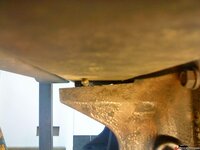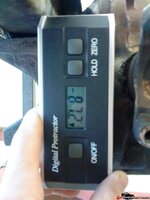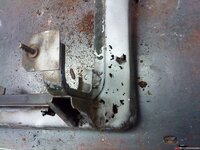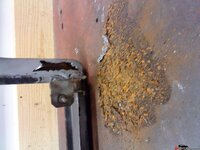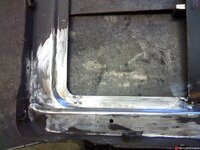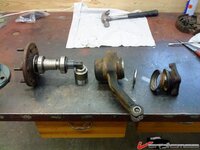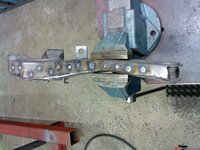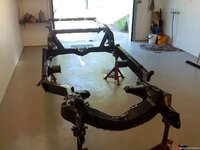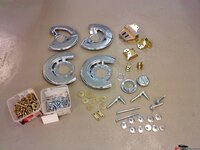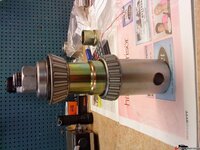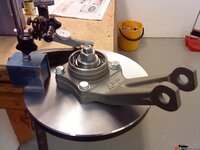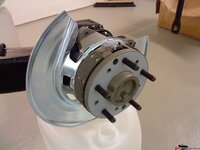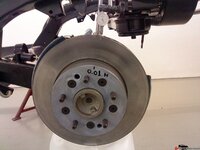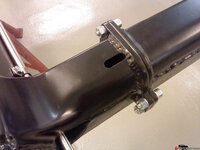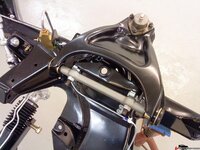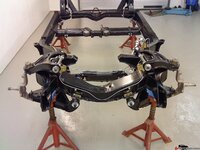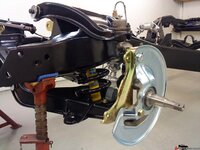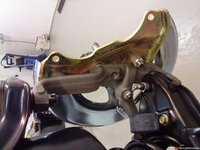This operation resulted in parallell out going (yoke) and in going (pinion) shafts.
If a calculation of the resulting working angle for the universal joints in the cardan shaft is made with the previous measurements, the result is 3,4°.
I have double checked this by designing the driveline in my CAD system and taking measurements from the design.
But there is a second factor that influences the total working angle. It is the angle formed by the offset of the engine in relation to the rear axle.
It was difficult to measure this angle so I took this angle from my design and it is approximately 0,3°.
With this angle it is possible to calculate the total working angle.
The very thorough Germans at
www.gwb-essen.de has a nice formula for this:
Vres = arctan x square root of (tan²x3,4° + tan²x0,3°)
In my case the final result is 4,0° at each universal joint. Recommended total working angle should be between 0,5° to 3,5° so, I´m above the maximum recommended limit...
If I raise the rear axle I will be even more out of the limit. But, I would think that a car that is not used as a daily driver will manage anyway. it will take a long time to wear out the universals. And I´ve got brand new hig quality Spicers:bounce::bounce:
